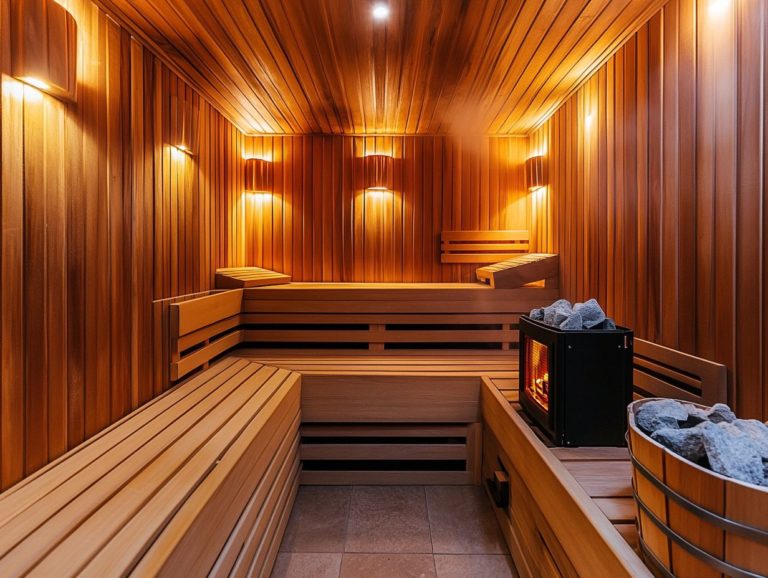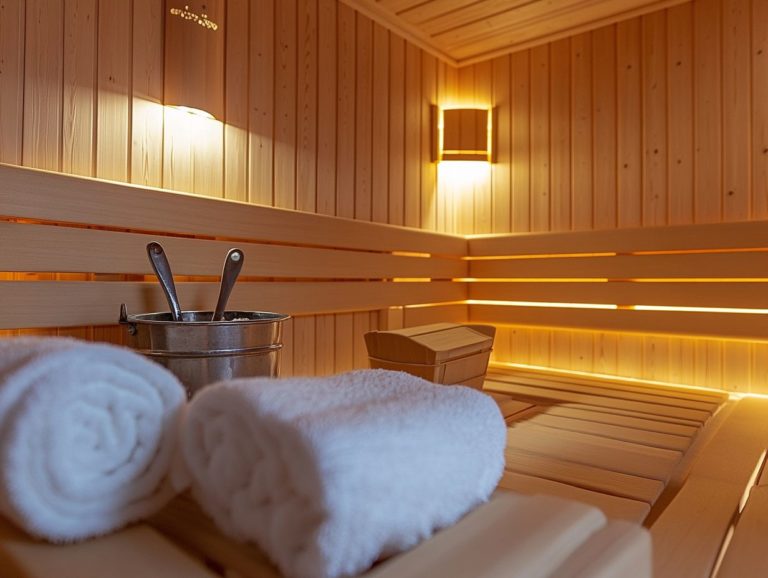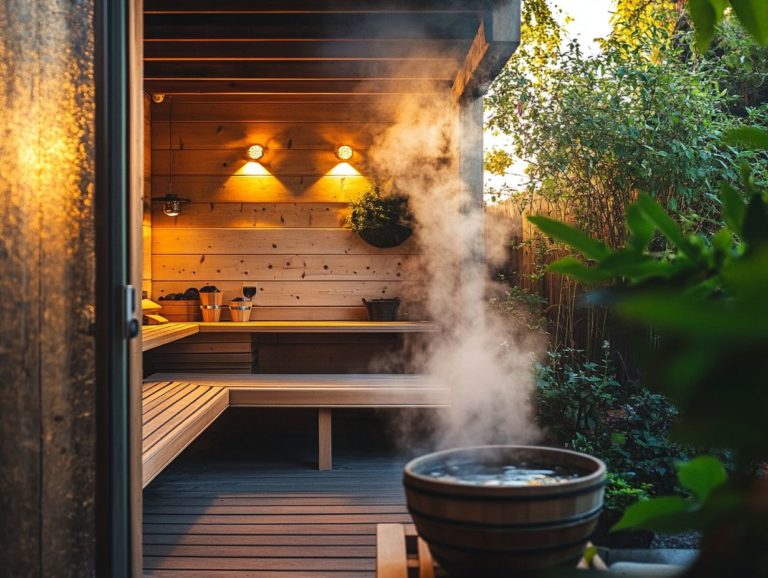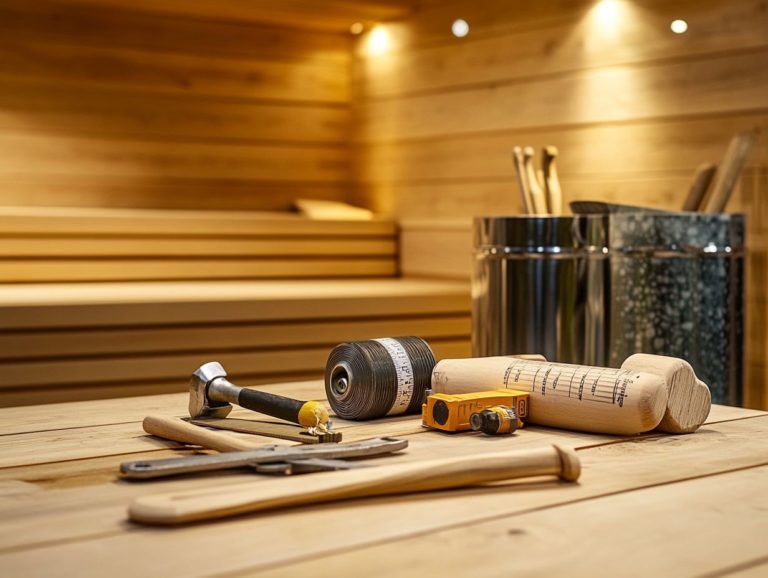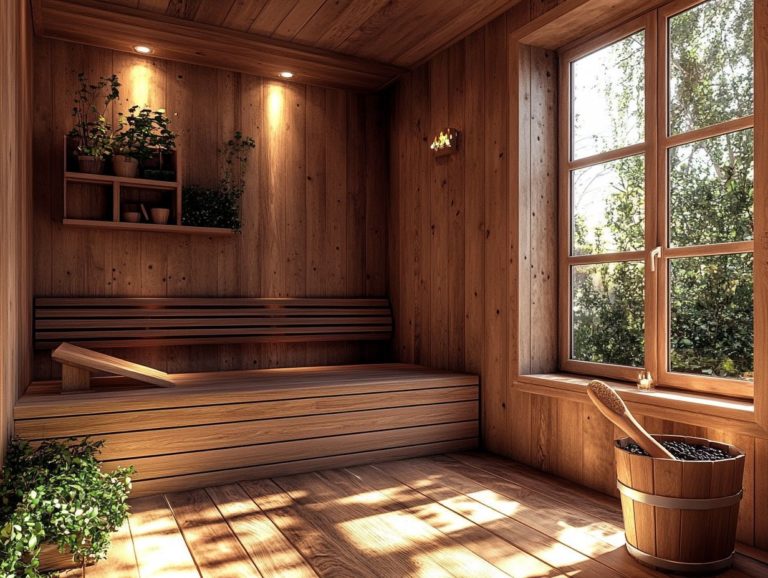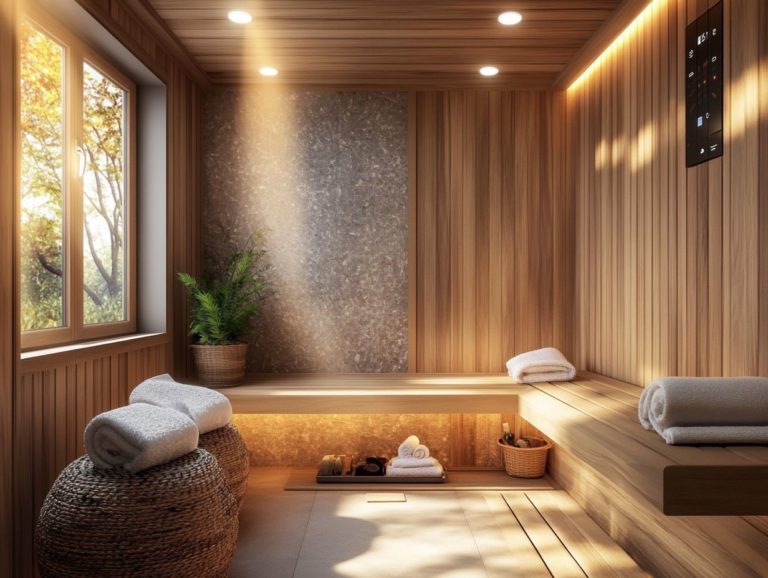“Tips for Planning a DIY Sauna in Your Backyard”
Picture this: Your own DIY Outdoor Sauna, a perfect spot to unwind and recharge right in your backyard.
This article will provide you with everything you need to create your personal oasis, from understanding the many health benefits to selecting the ideal location for your outdoor sauna.
You ll discover the essential materials and tools required, along with a comprehensive step-by-step guide on how to build your sauna. Plus, there are maintenance tips included to ensure everything runs smoothly for years to come.
Prepare to transform your outdoor space and elevate your well-being!
Contents
- Key Takeaways:
- Benefits of Having a DIY Sauna
- Choosing the Right Location for Your DIY Sauna
- Materials and Tools Needed for Building a DIY Sauna
- Step-by-Step Guide for Building a DIY Sauna
- Essential Tips to Keep Your DIY Sauna Safe and Lasting!
- Frequently Asked Questions
- What should I consider when planning a DIY Outdoor Sauna in my backyard?
- What is the best location in my backyard to build a sauna?
- Do I need any special tools or equipment to build a sauna in my backyard?
- What type of sauna is best for a DIY project?
- How can I ensure the safety and durability of my DIY sauna?
- What are the benefits of building a sauna in my backyard?
Key Takeaways:
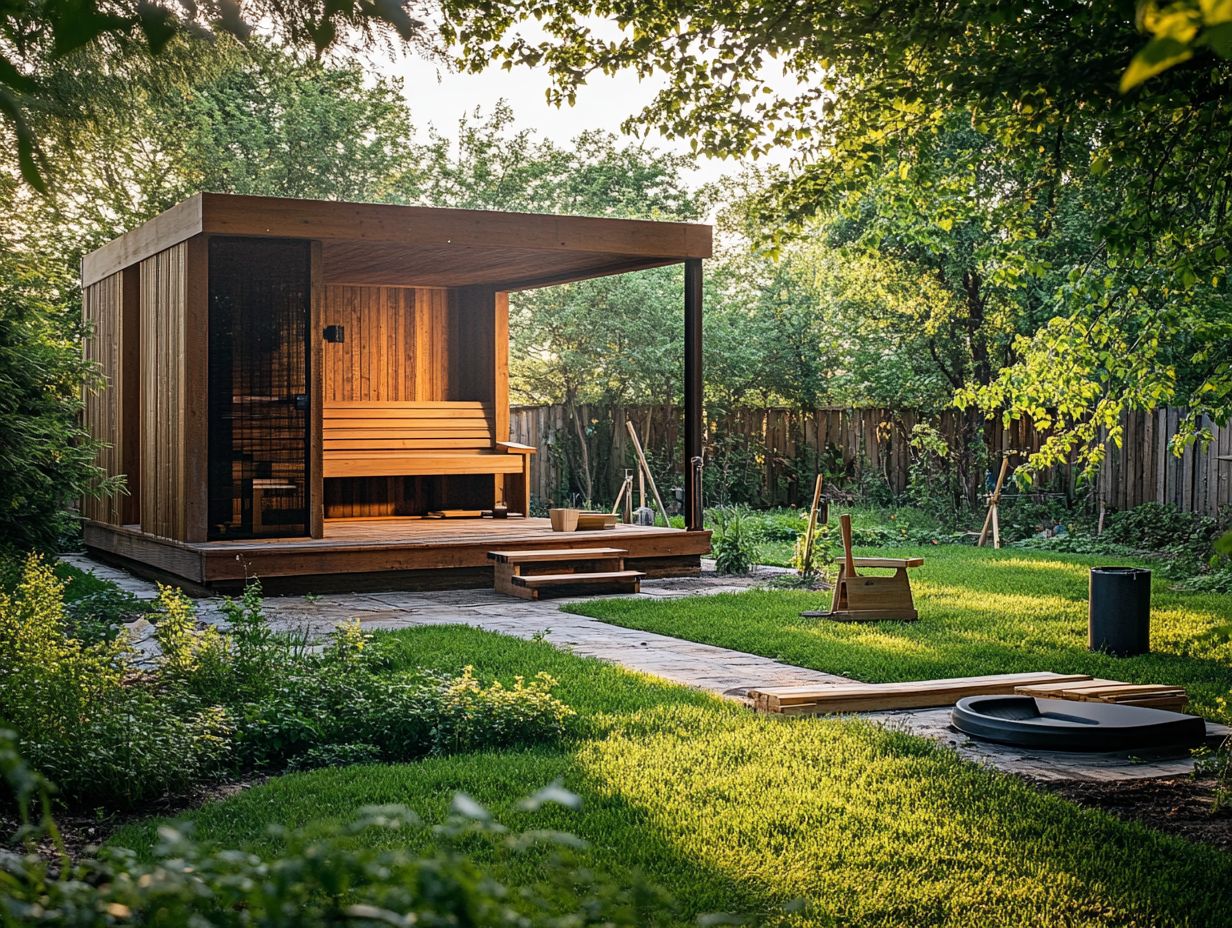
- Creating a DIY sauna in your backyard can provide both physical and mental health benefits.
- When choosing a location for your sauna, consider factors such as privacy and ease of access to water and electricity.
- Building a DIY sauna requires essential supplies and equipment, including wooden beams, insulation, and a sauna heater.
What is a DIY Sauna?
A DIY sauna is your chance to craft a personalized retreat, allowing you to relish the therapeutic health benefits of a sauna right in your own outdoor space. It enhances your relaxation and overall well-being.
Often constructed with eco-friendly materials like wooden beams and cedar wood, this unique sauna not only improves the aesthetics of your backyard but also provides a serene escape for you and your guests.
The surge in popularity of DIY outdoor saunas stems from their remarkable adaptability to your tastes. You can design a one-of-a-kind sanctuary that meets your specific needs. With endless customization options, you can select finishes and layouts that resonate with you and incorporate LED strip lighting and sound systems to elevate the ambiance.
The allure of cedar wood lies in its natural resistance to decay and delightful aroma. Sturdy timber beams and concrete slabs contribute to an inviting rustic charm.
By integrating a DIY sauna into your backyard, you re not just investing in your well-being; you’re also enhancing your property s value, transforming your outdoor space into a desirable oasis for relaxation.
Benefits of Having a DIY Sauna
A DIY sauna offers a wealth of benefits, enhancing both your physical and mental well-being while providing a cost-effective means to establish a tranquil retreat in your backyard.
You can customize these saunas to meet specific energy efficiency standards, which are guidelines that help you save on energy costs while enjoying the therapeutic advantages without the burden of skyrocketing utility bills by choosing the right heat source and insulation.
Physical and Mental Health Benefits
The physical and mental health benefits of using a DIY sauna are truly remarkable. Regular sauna sessions can enhance your circulation, alleviate stress, and promote overall relaxation.
This carefully regulated environment facilitates effective detoxification, as the heat encourages sweating, which helps eliminate toxins from your body. Improved blood circulation invigorates your heart and muscles, delivering essential nutrients and oxygen throughout your system.
The soothing humidity levels foster deeper, more restorative breathing, significantly contributing to your relaxation.
This harmonious blend of factors not only cultivates a profound sense of well-being but also provides a sanctuary for your mind, allowing you to unwind from daily pressures while nurturing your mental health.
Don t wait! Start planning your DIY sauna today and transform your outdoor space into a wellness retreat!
Choosing the Right Location for Your DIY Sauna
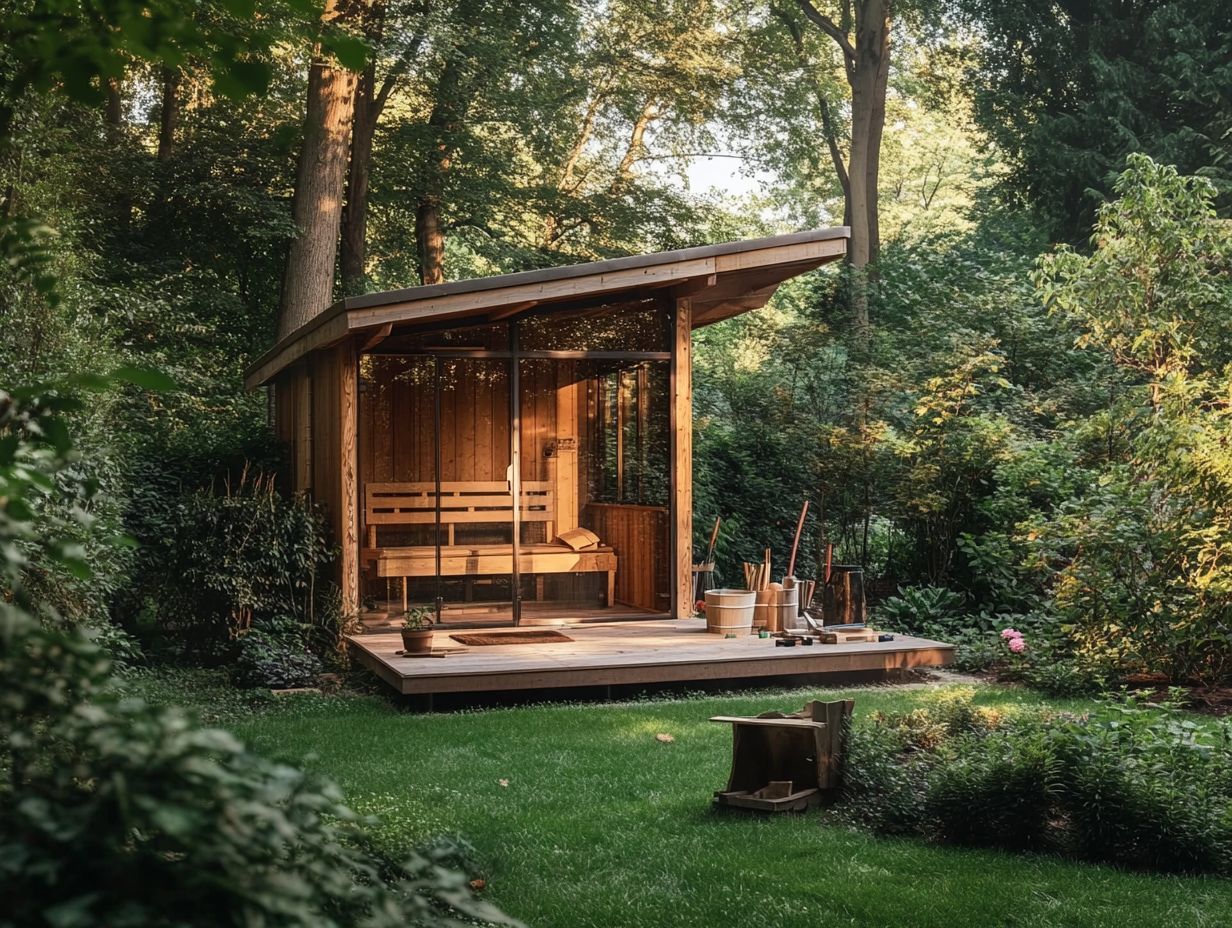
Selecting the perfect spot for your DIY sauna is essential to fully harness its benefits while prioritizing safety. Consider your backyard layout, the proximity to a water source, and how easily guests can access the sauna.
A great spot will make your sauna experience unforgettable and enhance the visual charm of your outdoor area, creating a distinctive sauna experience tailored for ultimate relaxation.
Considerations for Outdoor Saunas
When planning your outdoor sauna, there are several key considerations to address. Focus on the foundation, insulation, and air flow to ensure a durable and efficient structure. These elements make your sauna safe and enjoyable.
Establishing a sturdy foundation with concrete slabs is crucial. It supports the entire sauna and prevents future structural issues that could dampen your experience. Insulation retains heat and minimizes energy costs, creating a warm, inviting environment that beckons you to relax.
Ventilation is also important; it allows fresh air circulation, preventing moisture buildup and maintaining a comfortable atmosphere. Incorporating safety features such as proper electrical installations and non-combustible materials ensures your sauna remains a protected retreat for everyone.
By paying attention to these key factors, you can enjoy your rejuvenating sauna experience today!
Materials and Tools Needed for Building a DIY Sauna
To create a DIY sauna, gather an array of premium materials and tools, including essential items like wood screws and wood glue. Think wooden beams for structure, aromatic cedar wood for the inviting interior, and robust concrete slabs for a solid foundation that guarantees both durability and comfort.
Choosing the right building materials is crucial. Utilizing sauna kits can streamline your project and provide all the essentials for a flawless build.
Essential Supplies and Equipment
When embarking on your DIY sauna project, gather essential supplies and equipment. A wood-burning stove or sauna heater is a must; it regulates the temperature to ensure your space remains comfortable and inviting. Don t forget wood screws for framing, along with lighting options like LED strips to set the perfect mood for your guests.
Starting with a reliable wood-burning stove or sauna heater is vital. It s your temperature control ally, ensuring the sauna remains a haven of relaxation. For structure, framing materials like treated lumber provide stability, while proper insulation promotes energy efficiency.
Consider incorporating lighting options like LED strips; they enhance the aesthetic charm and allow you to adjust lighting levels, creating a soothing atmosphere tailored to your preferences. Additional essentials include vapor barriers to shield against moisture and quality benches for seating, ensuring both functionality and comfort throughout your sauna sessions.
Step-by-Step Guide for Building a DIY Sauna
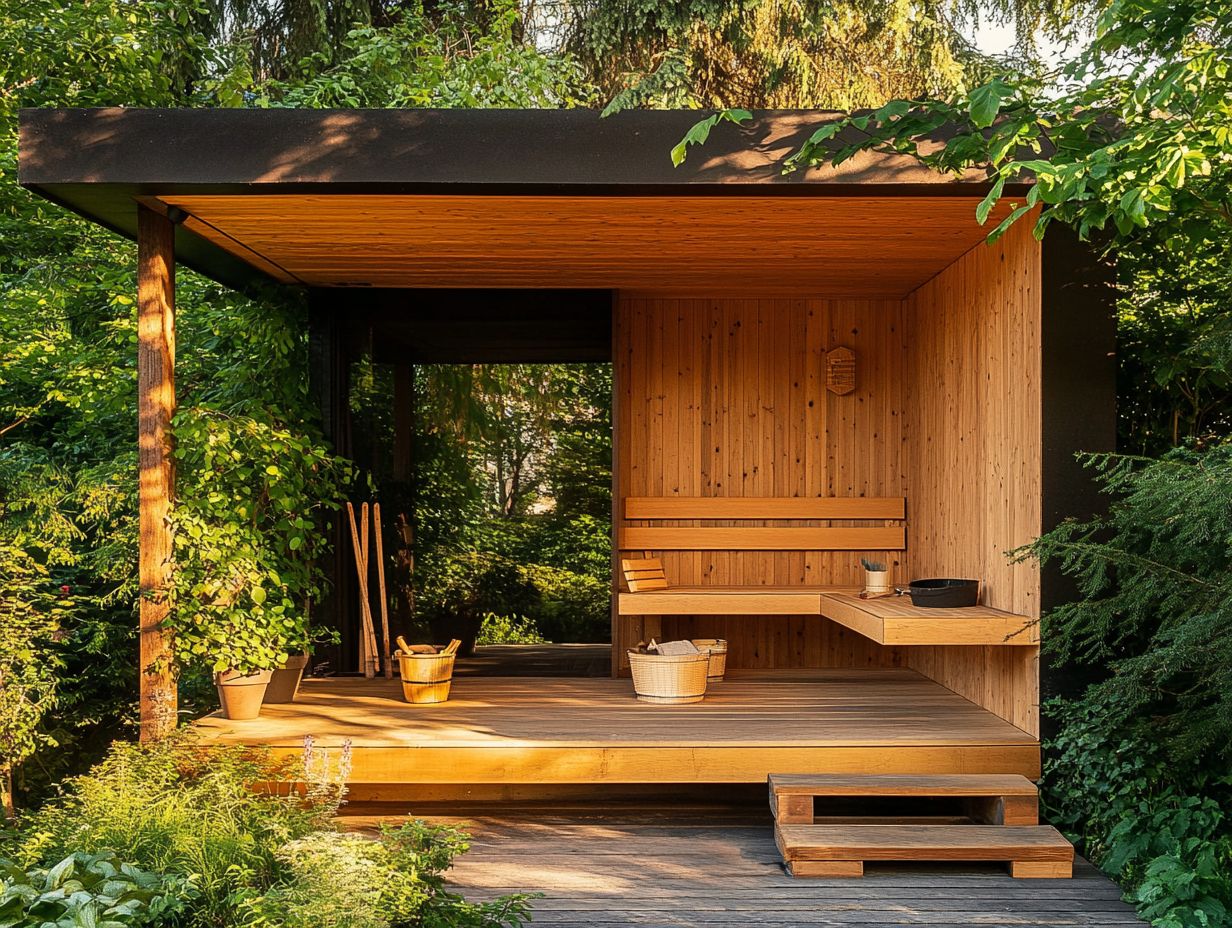
A detailed guide for building your own DIY sauna will take you through each essential phase, beginning with laying a solid concrete foundation.
From there, you ll construct the walls, install the roof, and add flooring to create a fully functional retreat. Each step demands careful attention to detail, ensuring your sauna not only exudes aesthetic appeal but also operates efficiently and safely with proper insulation and ventilation for every guest who steps inside.
Building the Structure and Adding Finishing Touches
Building the structure of your DIY sauna is an art that goes beyond simply erecting walls, a roof, and a sauna door. You’ll want to thoughtfully incorporate essential features like a sauna door and bench that enhance functionality and elevate your overall experience.
Pay attention to design elements while ensuring proper waterproofing and insulation. These vital steps will significantly improve the sauna’s quality and longevity.
When constructing the walls, choose materials that can endure high temperatures and moisture. Don t forget to slope the roof to prevent pesky water accumulation. Insulation is key to maintaining heat efficiency. Selecting high-R value materials provides excellent insulation, keeping the heat from escaping.
Think about the layout of your benches; tiered seating can provide varying temperature zones, enhancing usability and ensuring comfort for you and your sauna guests. For an inviting aesthetic, consider incorporating natural wood elements and ambient lighting, transforming your sauna into a serene retreat that promises relaxation with every visit.
Essential Tips to Keep Your DIY Sauna Safe and Lasting!
Regular maintenance and safety checks are essential for ensuring the longevity and safe operation of your DIY sauna. This includes cleaning every day and performing periodic inspections of temperature control and ventilation systems.
By following established safety tips, you not only protect your investment but also elevate the overall sauna experience for yourself and your guests.
Keeping Your Sauna Clean and Safe
Keeping your sauna clean and safe is vital for maximizing the incredible health benefits it offers. Make regular cleaning a fun routine to enjoy your sauna to the fullest! This includes managing the water source and adhering to safety guidelines, ensuring a pleasant experience for everyone who steps inside.
Establish a routine that includes wiping down surfaces after each use and committing to a deep clean weekly. Pay special attention to the sauna bench and flooring, opting for natural cleaners to keep harsh chemicals at bay.
Regularly assessing the water quality and temperature control ensures your sauna guests enjoy a comfortable and safe environment free from potential hazards.
Don t overlook ventilation; ensuring proper airflow is essential to prevent mold and bacteria growth, maintaining a healthy setting. Utilizing insulation and design elements can further enhance the sauna. A spotless sauna doesn t just feel good it significantly elevates your overall wellness experience.
Frequently Asked Questions
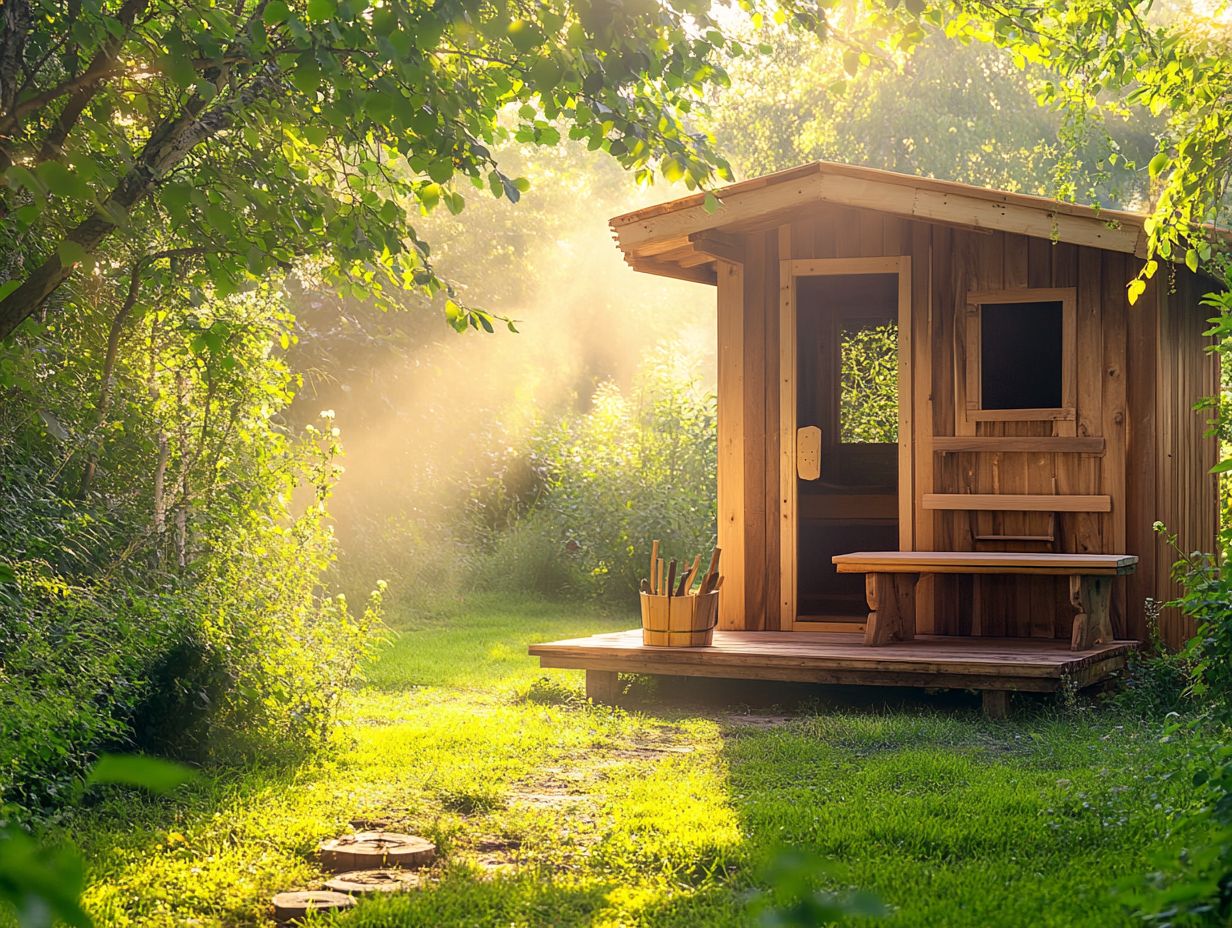
What should I consider when planning a DIY Outdoor Sauna in my backyard?
Consider the space available, the type of sauna you want to build a sauna, materials needed including timber beams and steel rods, and any necessary permits or regulations in your area.
What is the best location in my backyard to build a sauna?
The best location for a DIY sauna is typically in a flat, open area with good drainage and easy access to water source and electricity. Avoid placing it too close to trees or other structures that could potentially catch fire.
Do I need any special tools or equipment to build a sauna in my backyard?
Yes, you will need some basic tools such as a hammer, saw, and level, as well as specific sauna building tools like a sauna heater, wood burning stove, thermometer, and sauna stones. It is also recommended to have a helper and some building experience.
What type of sauna is best for a DIY project?
The most popular and easiest type of sauna to build for a DIY project is a traditional wood-fired sauna. However, there are also sauna kits available for electric or infrared saunas that may be simpler for beginners.
Start planning your DIY sauna today for a relaxing retreat at home!
How can I ensure the safety and durability of my DIY sauna?
To ensure safety and durability, use high-quality materials like cedar wood. Follow building codes and regulations, choose a reliable heat source, and maintain your sauna regularly.
What are the benefits of building a sauna in my backyard?
Building a sauna in your backyard saves money over time. It’s a fun project that lets you customize designs, like using Shou Sugi Ban a Japanese method for preserving wood and adding glass doors.

